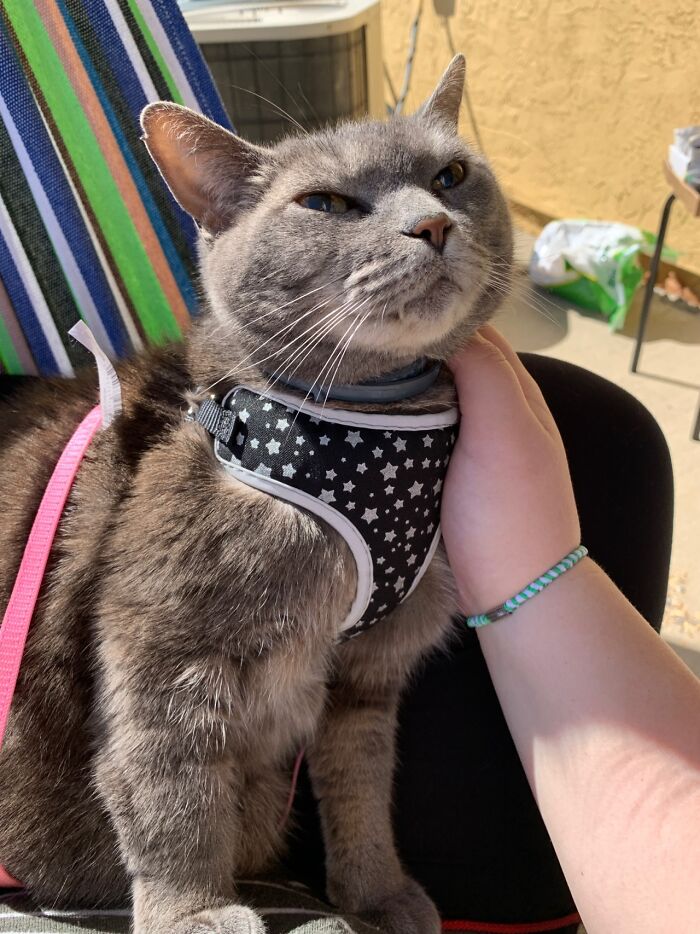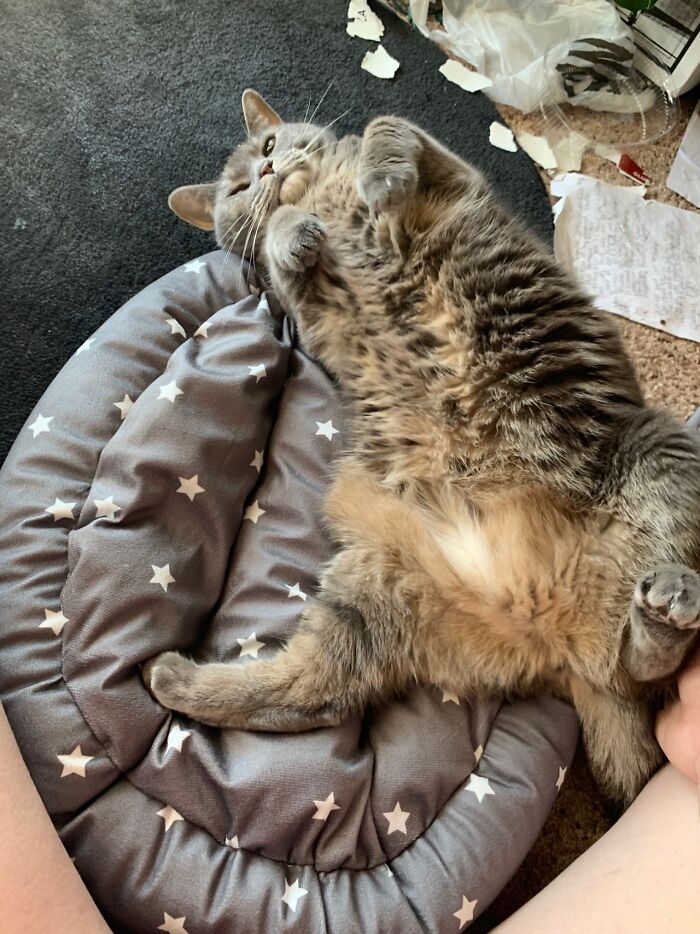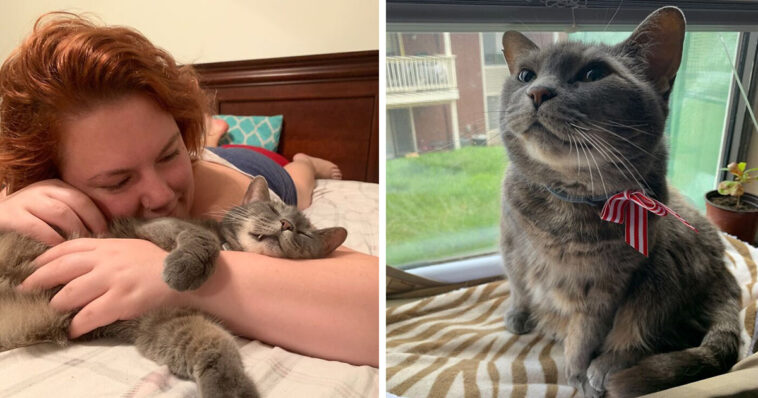The fact that cats wander in mysterious ways shouldn’t come as a surprise. We’ve all heard and witnessed odd feline behaviors, better known under the umbrella term of ‘cat logic.’ But one goofy feral cat has taken it a step further and proved that it’s not us who own cats, but it’s the cats who own us.
You see, when this cute little floof born in a feral cat colony decided it was time to self-domesticate, she waited no longer. According to this Tumblr blogger, her cat simply invited herself in and never, ever left.
Endless belly rubs and spoonfuls of chicken coming right at her mouth were apparently included in the package. I guess the answer to who’s the world’s biggest furry baby is all clear now. Let’s see the full thread right below that sheds light on how feral cats can turn domestic, in a seamless yet major switch of their lifestyles.
This cute little floof was born in a feral cat colony, but according to the Tumblr thread, she decided to domesticate herself

The thread’s author said that the cat had enough of her wild life and invited herself into their family
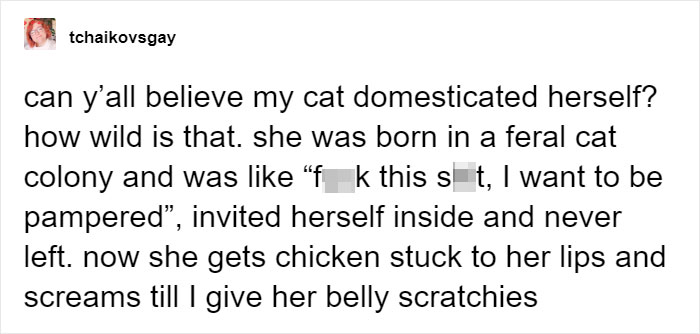
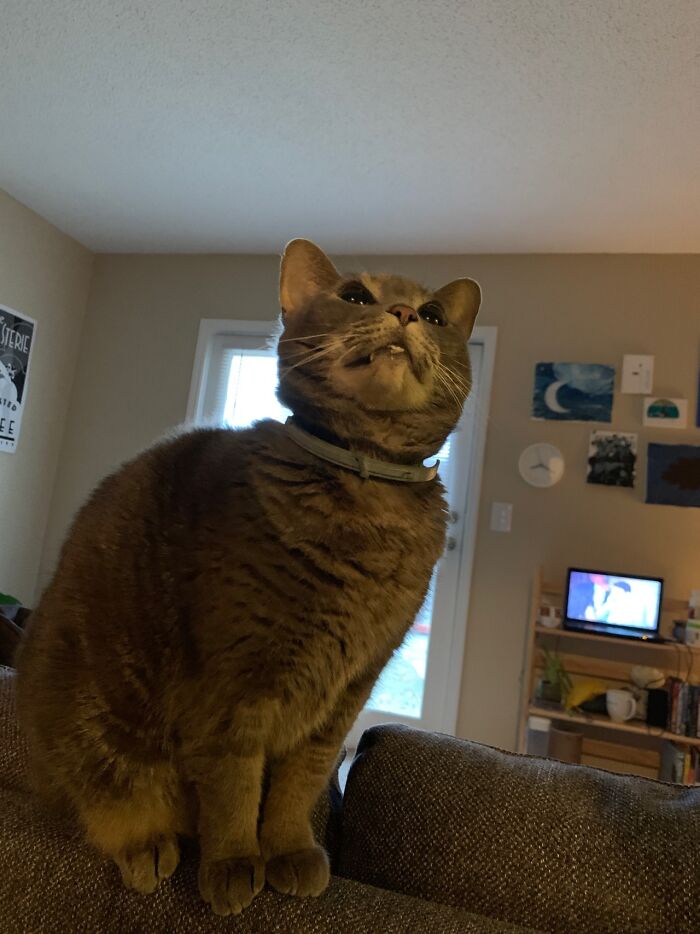
The certified feline training and behavior specialist Molly DeVoss who runs “Cat Behavior Solutions” told us that feral cats do indeed develop trust over time. “They learn that the person feeding them is reliable, predictable, and not going to harm them.”
According to Molly, community cat personalities range from truly feral, e.g. a cat who has no history of human social interaction, to a neighbor’s indoor/outdoor cat. However, “many people mistake community cats for feral, when they are actually a neighbor’s cat looking for a better meal and companionship.”
And it seems like the cat never regretted her decision


Molly also said that even though socializing a feral cat is a slow process, it can nevertheless be done. “Over time, a feral cat can discover that a person can be depended upon, provide a good meal and warm place to stay, and begin to show their appreciation with tenderness,” the feline behavior specialist concluded.
Someone suggested this is how cats got domesticated in the first place

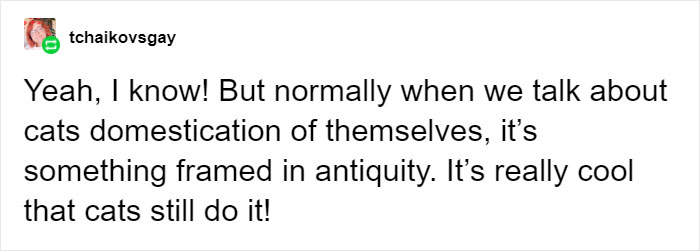
A 2017 study of the spread of domesticated cats published in “Nature Ecology & Evolution” suggested that felines lived for thousands of years alongside humans even before they were domesticated. It’s now believed that cats started hanging around farmers about 8,000 years ago as they followed increased mouse and rat populations.
According to the study co-author Claudio Ottoni from the University of Leuven, “It’s not that humans took some cats and put them inside cages,” contrary to what many believe today. “Instead, people more or less allowed cats to domesticate themselves.”
Upon popular request, the author shared more pictures of their beloved former feral named Ghost





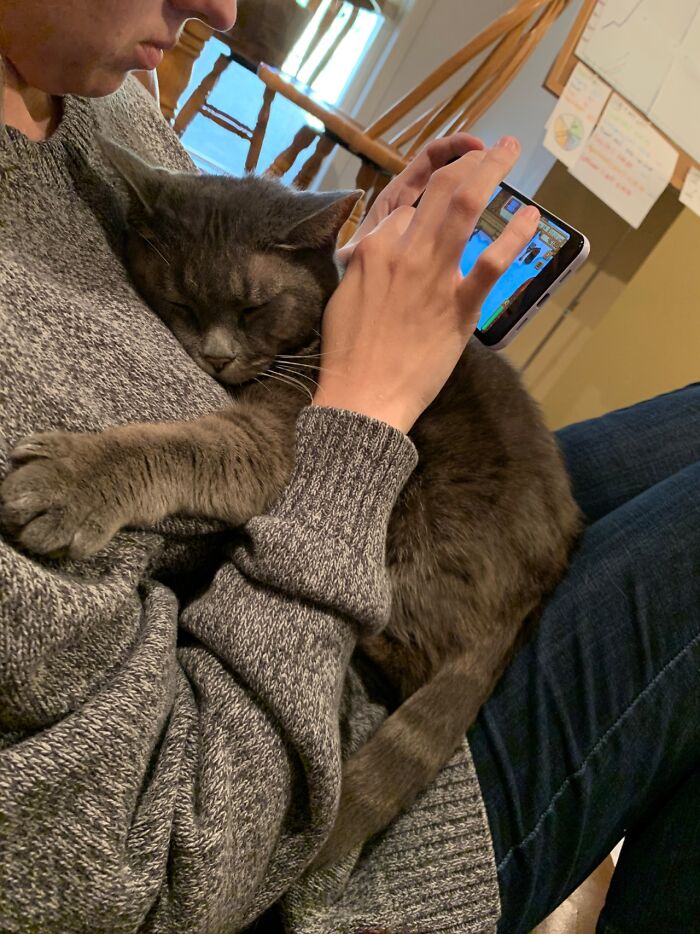


And although feral and domestic cats possessed no significant differences in their genetic makeup, one of the few distinctive traits became their coat markings. Blotched or striped coat markings appeared in domesticated tabby cats only in the Middle Ages.
According to the evolutionary geneticist Eva-Maria Geig, felines became close companions to humans without changing much. This is in contrast to canines, which became the first domesticated animals who were selected according to the tasks they would perform. Such selections resulted in the current diversity of dogs, but cats have never been selected in this way.

